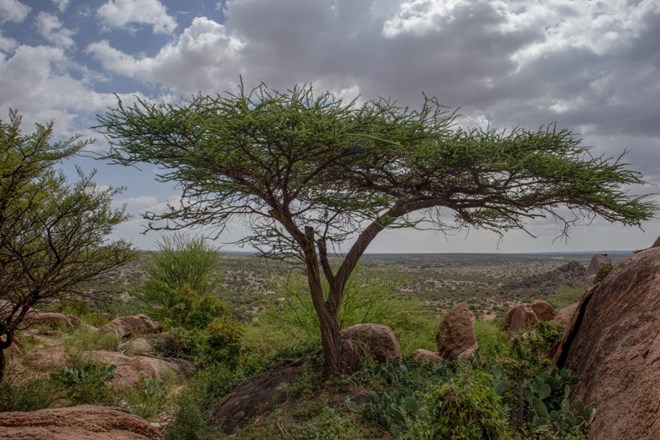 Image source
Image source
The Promise Beneath the
Soil
Geological surveys and rising international
interest suggest Somalia possesses significant reserves of oil, gas, and
precious minerals, such as gold, iron ore, and uranium among others. These
resources have the potential to:
- Increase national revenue
- Create jobs across sectors
- Fund infrastructure, education, and healthcare
·
Eliminate reliance on foreign
aid
However, tapping into this wealth requires
more than extraction — it demands robust institutions, transparent governance,
and community-focused development.
Lessons learnt from
Resource Dependency
Many nations have fallen prey to the
"resource curse," where mineral wealth fuels corruption, inequality,
and conflict. Somalia’s fragile institutions and historical challenges present
risks such as:
- Mismanagement of contracts and revenue
- Environmental degradation
- Community displacement
- Intensification of clan-based divisions
True prosperity lies in balancing resource
exploitation with inclusive development and long-term vision.
Agriculture & Livestock: The Economic
Backbone
Agriculture and livestock remain Somalia's
most vital sectors:
Key Statistics suggest that;
- Agriculture contributes 19.7% to GDP (or 65% when
combined with livestock)
- Livestock alone accounts for over 40% of GDP and 50%+
of export earnings
- The livelihood of over 70% of the population depends on
these sectors
Opportunities
- Boost productivity through conservation agriculture
- Expand market access and infrastructure – irrigation systems
- Add value to the livestock exports by processing meat and hides
locally
- Diversify livestock exports beyond Gulf states
- Develop agro-processing and veterinary services
The Blue Economy:
Somalia’s Coastal Advantage
Somalia’s coastline — the longest in
mainland Africa — stretching 3333 km - harbours enormous potential across:
Fisheries & Aquaculture
- Rich waters teeming with tuna, shrimp, lobsters and sardines
- Aquafarming to tap to the world’s ever increasing demand for
seafood
- Coastal lagoons ideal for farming tilapia, oysters and seaweed
Tourism & Renewable Energy
- Historic sites and beaches ripe for eco-tourism
- Wind and tidal energy projects to bolster rural electrification
Maritime Trade & Conservation
- Ports like Mogadishu, Berbera, Bossaso and Kismayo can emerge
as global trade hubs due to their vicinity to global trade routes.
- Marine Protected Areas safeguard ecosystems for future
generations
The Blue Economy can complement land-based development
while protecting natural heritage.
The Diaspora Asset:
Global Roots, Local Impact
With over 2 million Somalis living
abroad, the country has a unique opportunity to tap to their intellectual and
financial resources. The Somali diaspora is an engine for growth and recovery
and their contributions include:
- $2 billion annually in remittances
but the sad news is though, according to (Wardheernews.com, 2025), Somalia
imports roughly 50 tonnes of Kenyan Miraa every day. In 2023, with prices
at around $23 per kilogram, this meant a daily spend of about $1.1
million— totalling nearly $420 million a year. With Kenya now
doubling its prices, Somalia's annual outlay could soar to almost $1
billion. Half of that amount goes to Ethiopia which means, roughly, $1.5
billion of the annual remittance drains to the neighbouring countries.
- Ownership in 30–40% of major enterprises
- Leadership roles — 66% of regional and federal leaders
are returnees
- Investments in education, health, infrastructure
- Young Somalis, raised and educated in the West, who are immune
to the clan infection can be the difference.
Strategic engagement through diaspora
bonds, reintegration programs, and inclusivity policies can amplify their
impact.
Finally a Balanced Vision
for Somalia
Somalia’s future isn’t defined by oil rigs
or gold mines alone. It rests in the strength of its people, the wisdom of its
leadership, and the sustainability of its choices. By embracing its
agricultural roots, coastal advantages, and global connections, Somalia can
chart a path toward inclusive and resilient prosperity.
Bibliography
- National Economic Council of Somalia. (2024). Harnessing
Somalia’s Blue Economy: Pathways to Sustainable Prosperity.
- U.S. International Trade Administration. (2024). Somalia
Country Commercial Guide.
- IGAD & Government of Somalia. (2023). National Blue
Economy Strategy (2023–2027).
- RDI Africa. (2024). Emerging Sectors in Somalia’s Blue
Economy: Biotechnology and Seaweed Farming.
- Wardheernews.com - somalias-billion-dollar-miraa-addiction-a-nation-bleeding-cash-to-Kenya.
- Afro Discovery. (2024). Marine Resources and Coastal
Development in Somalia.
- Somali Development and Reconstruction Bank. (2025). Unlocking
Investment in Somalia’s Livestock Sector. Read
the full report
- Somali Development and Reconstruction Bank. (2025). Unlocking
Somalia’s Untapped Blue Economy. Explore
the article
- Somali Progress Policy Brief. (2025). Enhancing the
Livestock Sector in Somalia. View
the brief
- Ministry of Agriculture and Irrigation of Somalia. (2025). Country
Report on Agriculture in Somalia. Access
the report
- Somali Development and Reconstruction Bank. (2025). Understanding
Somalia’s Agricultural Sector. Review
the analysis
- World Bank. (2025). Somalia Economic Update: Reforming
Somalia’s Security Sector. See
the update
- Oxfam America. (2025). Remittances to Somalia. Visit
the resource
- Danish Refugee Council. (2025). Somali Diaspora Engagement
Overview. Explore
the program
- Somali Development and Reconstruction Bank. (2025). Somalia’s
Dawn After Debt Relief. Read
the article